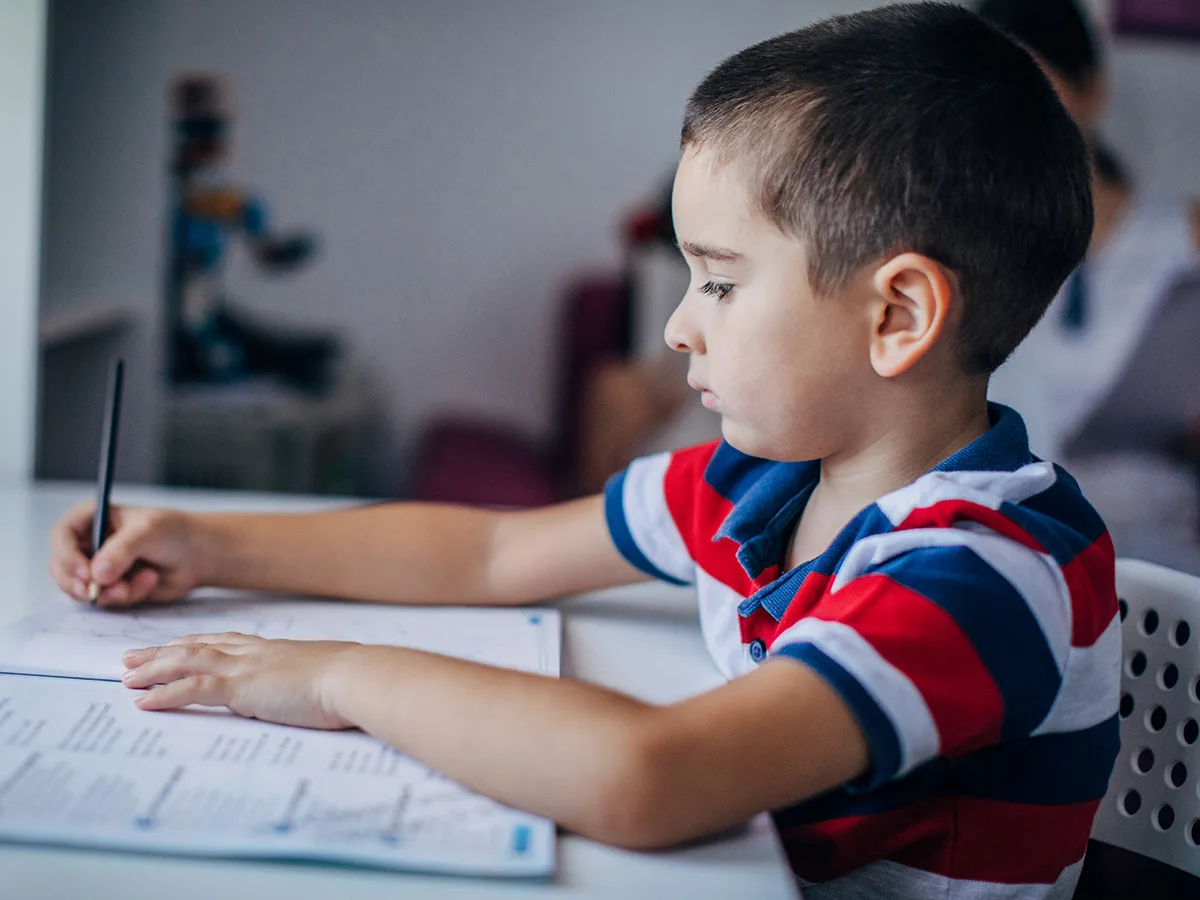6 skills kids need for written expression

Expert reviewed by Gary A. Troia, PhD

At a glance
Written expression is challenging for many kids.
A number of key skills are involved in the writing process.
There are ways to help struggling writers build these writing skills.
Writing is one of the most difficult tasks for kids to learn. That's because a lot goes into expressing thoughts in writing, or written expression.
Here are six skills kids need for written expression, and what can help struggling writers.
1. Reading comprehension
One of the most basic skills for writing is reading comprehension — the ability to read and understand text. To write, kids first need to be able to sound out unfamiliar words (decoding) and instantly recognize many other words. Then they need to understand the meaning of strings of words, in sentences and in paragraphs.
Having a good vocabulary helps with this. But new vocabulary words are mostly learned through reading.
Without these skills, it’s difficult for kids to even start writing. They will likely struggle with spelling and with creating text that’s meaningful. And they’ll have trouble revising and editing their work. Those tasks require re-reading closely to catch and fix mistakes or weak spots.
What can help: Technology can help kids who have reading challenges. For instance, if they struggle with sounding out words, text-to-speech can read aloud the words they’ve written. Some text-to-speech tools read aloud words as they type them, which can be really helpful when editing.
2. Transcription
Transcription is the physical act of producing words. This skill covers handwriting, typing, and spelling.
Kids can struggle with transcription in lots of ways. Some have messy or illegible handwriting, even after being taught. Others write very slowly by hand. And others might write legibly or type quickly and accurately enough, but they struggle to spell words without help.
Using a keyboard can often help speed up transcription. But for some kids, the very act of typing is a struggle and gets in the way of writing.
What can help: Multisensory instruction, or teaching in a way that uses more than one sense at a time, can sometimes improve handwriting. (Explore techniques to try.) So can tools like pencil grips. Assistive technology like a keyboard may help kids work around handwriting challenges.
For kids who struggle to type or spell, tech tools like dictation (speech-to-text) and word prediction can make transcription easier. Spellcheck is also a common tool students use in school.
3. Sentence construction
To write, kids have to know how to construct sentences that make sense. But kids often have a hard time understanding and using correct sentence structure.
They may not understand the placement of verbs or how verb tenses work. They may also use sentences that are too simple or incomplete. Or they may string a lot of ideas together into long run-on sentences.
Using correct punctuation (like commas and apostrophes) can be a challenge, too. So can knowing when to use capital letters.
What can help: One way to help kids who struggle with this skill is by teaching them basic, practical knowledge. Things like the difference between a statement and a question, and the difference between a subject and a verb.
Kids need a lot of practice using this knowledge to write sentences. They might work on splitting and combining sentences, for example, and using sentence connectors like and or but.
4. Genre and content knowledge
Genre knowledge means knowing how to use different types of writing. If the assignment is to write a story, kids need to know what goes into the genre of narrative writing. It has to include setting (who, where, when) and plot (what and why).
Another example of a genre is the persuasive essay. To write one, kids need to use a position statement, reasons, facts to support reasons, and a conclusion that summarizes the main reasons.
Content knowledge means knowing something about the subject you're writing about. If asked to write a letter to a politician about pollution, kids need to understand what pollution is. They’ll also need to know how it affects people, animals, and the environment. And they may need to know what causes pollution.
What can help: Many kids pick up knowledge about genre just by being exposed to it in school through reading. Others may need more explicit instruction. For example, they may need to be taught about the difference between biography and memoir, or fiction versus nonfiction.
To do that, find good examples of each genre. Then compare and contrast them with weak examples or examples not in that genre. You can also come up with a list of common elements that all the good examples share.
Many kids have holes in their general knowledge about the world. That can hurt their writing. You can help kids build background knowledge through reading, field trips, and family outings. Talk about what kids are learning before, during, and after the outing. Just meeting new people and trying new things improves background knowledge, too.
5. Planning, revising, and editing
There’s a process to writing. You have to plan, revise, and edit work to express yourself well in writing. Researchers have found that good writers plan what to write in their heads or through brief notes before they write a first draft. That requires strong executive function skills, like and focus.
To write, kids have to juggle lots of ideas. Then they have to decide how to organize those ideas into paragraphs and an overall structure. This requires pulling the right knowledge from memory, like genre and content knowledge.
Kids also need to go back through what they’ve written to fix errors and make improvements so the message is clear. That requires understanding why and how to make changes to the text to make it better.
What can help: Kids can learn specific strategies about the writing process. For instance, the “hamburger” strategy helps kids plan a paragraph. A paragraph needs a topic sentence (top bun), main idea (patty), supporting details (condiments), and a conclusion (bottom bun).
A “spider map” encourages kids to think of a topic with supporting details. A “T table” helps them brainstorm reasons for and against a certain issue. And a timeline can help kids map out a sequence of events for a story.
Graphic organizers use many of these strategies. These tools help kids visualize how to plan their papers. They also help kids generate content in an organized way.
Checklists can also help kids revise and edit their work. A checklist could include:
Content (the quality and accuracy of ideas)
Organization (how information is structured and flows from beginning to end)
Language (the variety and precision of vocabulary and sentences)
Appearance (spelling, capitalization, and punctuation)
6. Self-regulation
The ability to self-regulate plays a big role in writing. When you set a goal for how many words a paper should be and then check the word count as you write, that’s self-regulation. If you get to the end of a sentence, realize it doesn't make sense, and decide to rewrite it, that’s self-regulation.
Here's another example. When kids get frustrated, they might give up on writing. But if they remind themselves that they’re making progress and can do it, that’s also self-regulation. Experienced writers do this naturally.
How kids view themselves as writers can impact their ability to self-regulate. Do they value writing? Do they feel competent? How motivated are they to write?
Self-regulation is hard for some kids. That’s especially true of kids with . Trouble with self-regulation can affect many of the other writing skills.
What can help: There are lots of strategies to teach self-regulated writing. You can teach kids to check each sentence of a paragraph once they’ve finished the paragraph. You can also encourage them to take breaks after writing a certain number of words.
Kids can also be taught to use positive self-talk to help with motivation. When writing, they could say to themselves, “It’s OK that this is hard because I know my effort will pay off.” The key to all these strategies is repetition and practice.
Read more about why kids can struggle with writing. And explore strategies to help reluctant writers.
Key takeaways
Memory, focus, and self-regulation play a big role in writing.
Some kids need to be taught about what goes into different genres of writing.
Graphic organizers can help kids come up with and organize concepts while they write.


